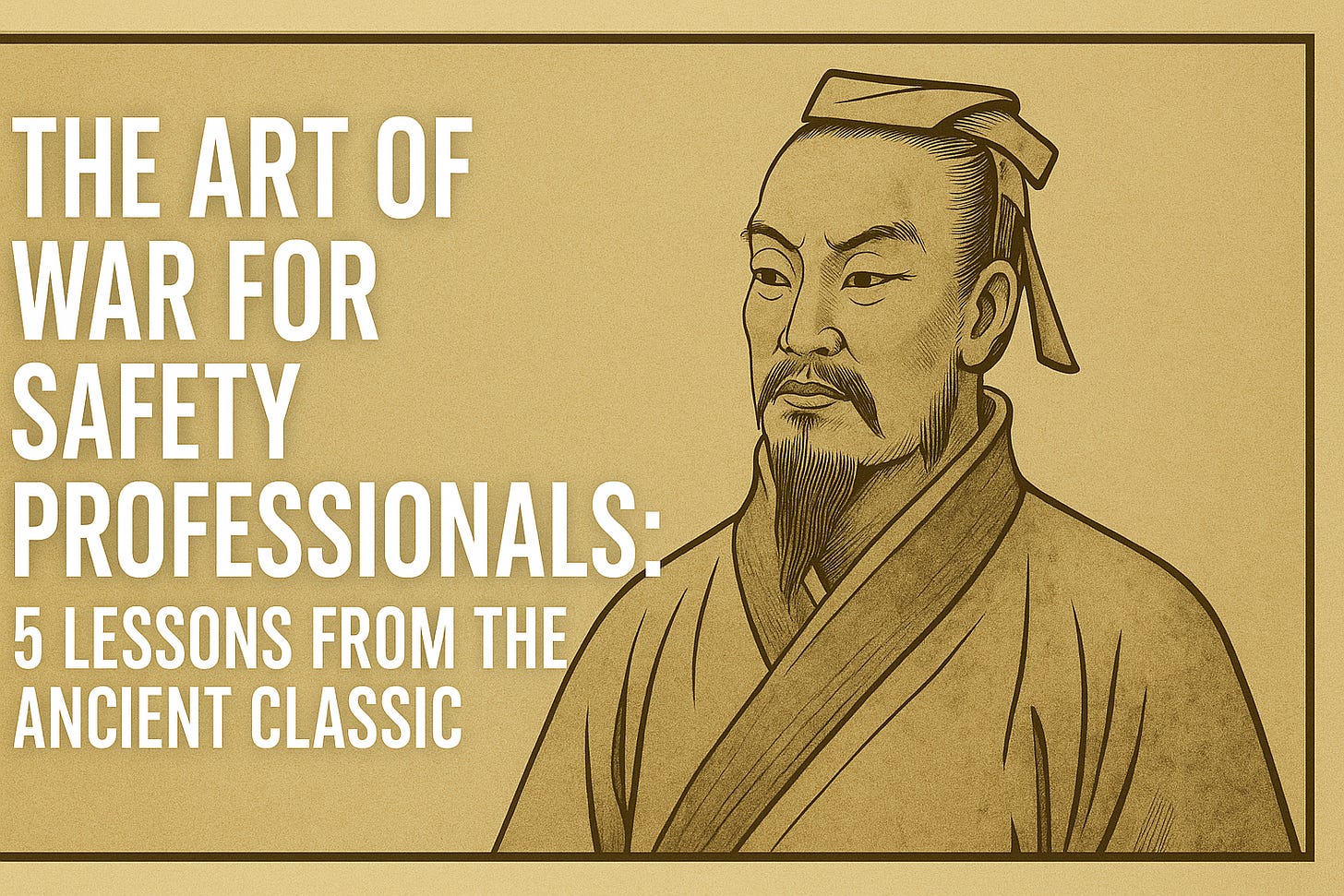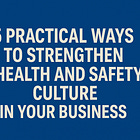The Art of War for Safety Professionals: 5 Lessons from the Ancient Classic
Hello and welcome to this week’s edition of Safety Pro Weekly.
Sun Tzu wrote The Art of War more than 2,500 years ago, but his principles on strategy and leadership still apply today.
This ancient text is one of the first books written on Chinese warfare and contains timeless lessons on human nature, strategy and preparation. Though it contains only 13 chapters and can be read in one sitting, The Art of War ranks as one of the most popular books of all time.
For safety professionals, The Art of War offers some key lessons on how to think about workplace risks, culture, and leadership. Though it might seem counterintuitive to imagine we can glean safety insights from a book dedicated to war, the lessons in the book teach us about human psychology as much as the tactics of war.
In this issue:
The Art of War by Sun Tzu is one of the most enduring and popular books ever written.
Though the subject of the book is war, the insights provided on preparation, strategy and human psychology are relevant to many walks of life, including workplace safety.
The following 5 lessons from the book teach strategies you can implement today to make your workplace safer.
Here are five adapted lessons to bring the ancient wisdom of The Art of War into modern safety practice.
Lesson 1: Every battle is won before it is fought
Sun Tzu teaches us that victory in war or any other arena is determined by preparation, planning and positioning long before the actual clash of swords. Do the work beforehand by calculating risks, studying your opponent and strengthening your advantages and you can largely decide the outcome before the first move is made.
The message for safety professionals is that taking steps like conducting proactive hazard assessments, planning the work with an eye to safety and efficiency and thorough training work to prevent incidents long before they occur. A workplace that invests in prevention doesn’t need to rely on reactive fixes after the fact.
Lesson 2: Know the enemy and know yourself
One of the more famous quotes from The Art of War is, “If you know the enemy and know yourself, you need not fear the result of a hundred battles.”
For safety professionals, the 'enemy' is risk: slips, falls, ergonomic injuries, machinery hazards. In this context, knowing yourself means knowing the risks in your workplace, your team’s strengths, weaknesses, and culture. When you understand both the hazards and the workforce, you can design safety programs that fit your workplace rather than trying to implement generic rules that may not be relevant.
Lesson 3: Put yourself in a position that makes defeat impossible
Sun Tzu tells us that a wise commander creates conditions where the enemy cannot win no matter what they do.
The safest workplaces are designed so that even if a worker makes a mistake, the system prevents a catastrophe. Think guardrails, lockout/tagout, or ergonomic redesigns. This is why Elimination occupies the highest level on the Hierarchy of Controls.
Human beings are variable. Sometimes they don’t follow rules, sometimes they are uniformed, sometimes outside factors influence their behaviour. A safety program that relies only on workers doing the right things will always have human risk built in. Instead, look for ways to engineer safety into the system.
Lesson 4: Appear where you are not expected
The book also teaches us the value of surprise. Consistent tendencies are something the enemy can analyze and prepare for in advance.
Don’t be like that.
For safety professionals, unannounced audits and surprise walkthroughs will show you what’s really happening on the shop floor, not just the sanitized, staged version that you see when an inspection is expected. By showing up in unexpected places and times, safety professionals see authentic behaviors and can address risks before they escalate.
Lesson 5: Treat your people like family
Sun Tzu tells us, “Regard your soldiers as your children and they will follow you into the deepest valleys; look on them as your own beloved sons and they will stand by you unto death.”
Worker buy-in can’t be forced. It’s built through demonstrating care and respect. Workers don’t engage with safety because of policies and procedures, they engage when they believe leadership genuinely wants the best for them. For safety leaders, showing empathy, listening, and taking worker concerns into account when appropriate creates loyalty and encourages safer behaviors.
Though it was written two and a half centuries ago, The Art of War still has much wisdom to offer about success in many areas of life, including workplace safety.
These five lessons from the book remind us that safety is not only about compliance, it’s about strategy, foresight, and leadership. By preparing early, knowing risks and people, engineering safe systems, staying vigilant, and leading with care, safety professionals can build workplaces where everyone thrives.
I’d love to hear about ways you’re using lessons from The Art of War to inform your workplace safety strategies. Message me in the comments and let’s hear it!
Safety Pro Weekly is published every Tuesday on LinkedIn and Substack.
Cheers,
Dan.






